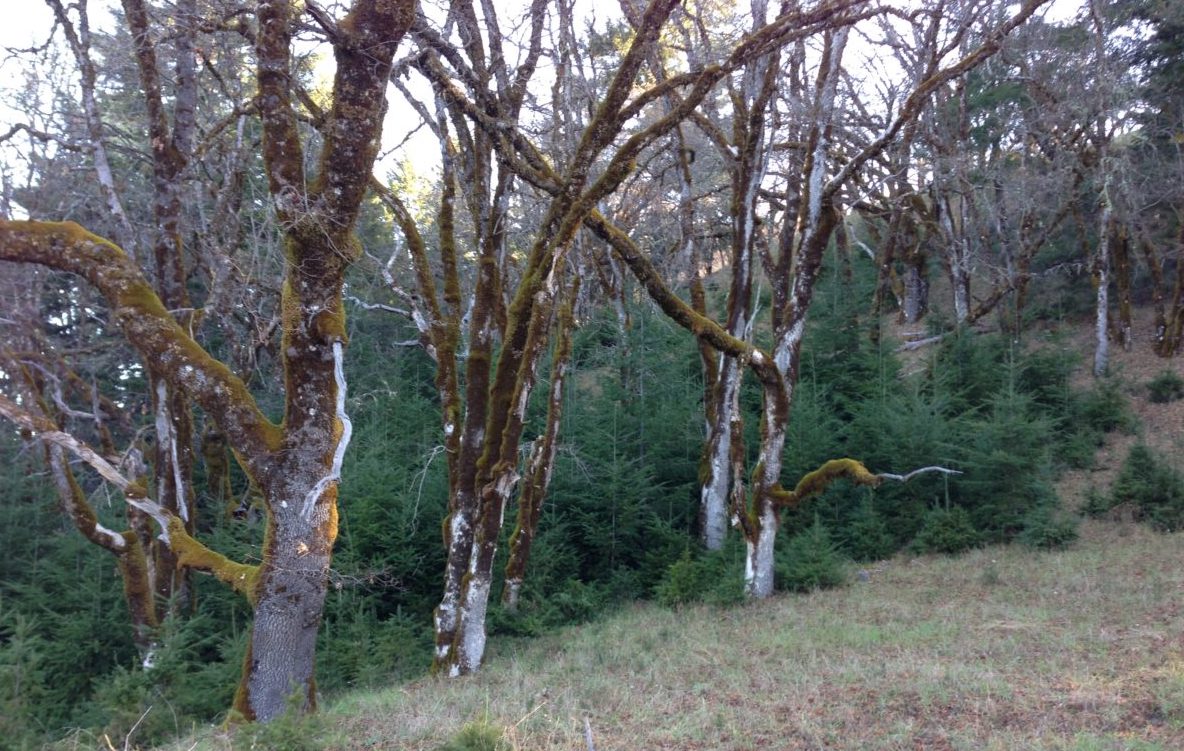The Blue-gray Gnatcatcher is a neotropical migrant that gleans insects from California’s oak trees and associated shrubs. It is one of numerous species that regularly use oak habitats.
Post submitted by Bruce Taylor, Pacific Birds Partnership Coordinator
There is good news for landowners in California – the state of California has developed new incentives for oak woodland restoration efforts on private lands. A new Oak Woodland Management Exemption, that took effect in January 2018, has established a permitting pathway for landowners who want to remove invading small-diameter conifers to restore stands of Oregon white oak or California black oak. The exemption is applicable to projects on less than 300 acres.
The loss of oak woodlands has been dramatic in much of the Pacific Northwest and preserving oak and prairie habitats is one of Pacific Birds conservation priorities. Oak ecosystems are fire-adapted, so when fires are suppressed over time, conifer trees are able to get a foothold and eventually shade out the oaks. More than the iconic oak landscapes are lost when this occurs. There are major implications to wildlife, biodiversity, and people.
For projects that involve the commercial harvest of conifers greater than 26 inches in diameter, and that are done in conjunction with oak woodland restoration, there is a now an additional permitting option. A new White and Black Oak Woodland Management Special Prescription, adopted in 2017, created this option for larger restoration projects.
Most oaks in the Pacific Northwest are found on private lands. These new California regulations will help landowners maintain or restore the oak habitats they love while conserving habitat for wildlife.
The regulatory changes are the culmination of years of work by oak advocates to reduce permitting obstacles that have discouraged voluntary habitat restoration efforts on private lands. The California legislature and the governor approved changes to the state’s Forest Practices Act in 2016, and the Board of Forestry’s new rules took effect January 1, 2018.
The University of California, Cooperative Extension, launched a research and extension project in 2013 to address gaps in oak woodland science and the barriers to restoration. They have played a key role in advancing the reforms and in March they will host workshops and develop educational materials to help landowners, registered professional foresters, and others understand the new policies.
For more information, contact Yana Valachovic, Forest Advisor at University of California Extension.
LEARN MORE:
Restoring Oak Habitats in Southern Oregon and Northern California: A Guide for Private Landowners
The University of California’s Oak Woodland Managment web page

In the absence of periodic fire, conifers are able to encroach upon oak woodlands. Photo: Yana Valachovic
